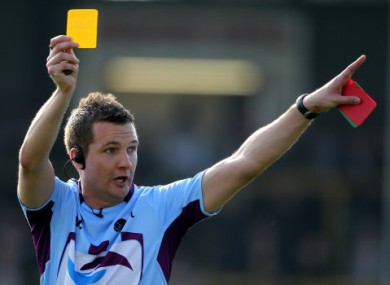Given South Africans’ penchant for hash tags, grumbling and indignation, there ought to be a competition to guess the first issue to outrage rugby fans in the new season.
The retention of struggling Allister Coetzee, perhaps? The continued riddle of Super Rugby? Or maybe Johan Goosen turning up in Cheetahs colours?
How about the good old tackle, the staple that is as old as the game itself? While you’ve been at the beach or tucking into that festive roast, the lawmakers were tinkering. They’re always doing that in the game, but with concussion such a big issue in sport and a premium on player welfare, the smart guys at World Rugby had to do something.
So what they’ve done is redefined illegal tackle categories and introduced tougher sanctions for reckless and accidental contact with the head. The bottom line is that the head is a no-go area and anyone stupid enough to target it will have the book thrown at them.
We’re lucky in that the southern hemisphere season is yet to begin, but the new edict was issued on January 3, in the middle of the northern hemisphere season. They’ve had to wisen up quickly.
Super Rugby teams will doubtless have top refs in during pre-season advising them on the new guidelines.
RRefs will be scrutinising players more than ever
The players will be watched like hawks. Big Brother will be eyeing the refs and the refs will be scrutinising the players more than ever. If you think red and yellow cards are popular currency now, just wait for the start of Super Rugby.
As ever with such things, there will be unintended consequences. Ball carriers will be tempted to duck lower into tackles, milking the possibility of a penalty. What about the player diving over the line being stopped by a “high” tackle? Defending your line close-in becomes Hobson’s Choice: tackle high to stop the grounding and you’ll be penalised; tackle low and you’ll concede a try.
This is what happened on weekend one in the Ulster-Scarlets Pro 12 game where Ulster’s Sean Reidy was sent off for a high tackle as he stopped scrumhalf Aled Davies from crossing the tryline. The ref issued a card and awarded a penalty try. It looked absurd.
The onus is on the tackler in every instance when the ball carrier should also bear responsibility for safety.
Indeed, if you aim lower as the tackler and the runner is leading with an elbow, knee or hip, the tackler is in danger of getting his brains scrambled too.
Given how many defenders start out the tackle across the chest and end up with their arms around the head area, a not unnatural event given the impact and nature of the tackle, the very art of defence could be redefined. If players know they won’t be interfered with around the upper body, the offload could become a potent weapon used more and more.
The attacking game could yet become fashionable again with fewer players wrapped up in higher tackles. Arms and hands will be freed and perhaps staid game plans too. We might see a game that becomes even faster.
Defences are going to have to sort themselves out. They will have to be technically spot-on, with little margin for error. Any teams that are sloppy about their targets when defending, who don’t hit accurately, could quickly find themselves with just 12 or 13 players.
The new-fangled laws will likely see more players crowd the tackle area, potentially freeing up other areas of the game to attack. Changing times indeed.
The rucking game will also metamorphose. The neck-holds and twisting around the head area in rucks and mauls are so common as to seem irrelevant. These are effective tactics, yet the new diktat of zero tolerance will put an end to the practice. Players will have to find another way to shift the opposition, who often bend down over the ball and plant their feet as the first man at the breakdown.
Fair contest for the ball, one of rugby’s central tenets, thus becomes anathema.
Whatever happens, the first few weeks of the new season are bound to be fascinating (and frustrating). Watersheds often are. – © Sunday Tribune

